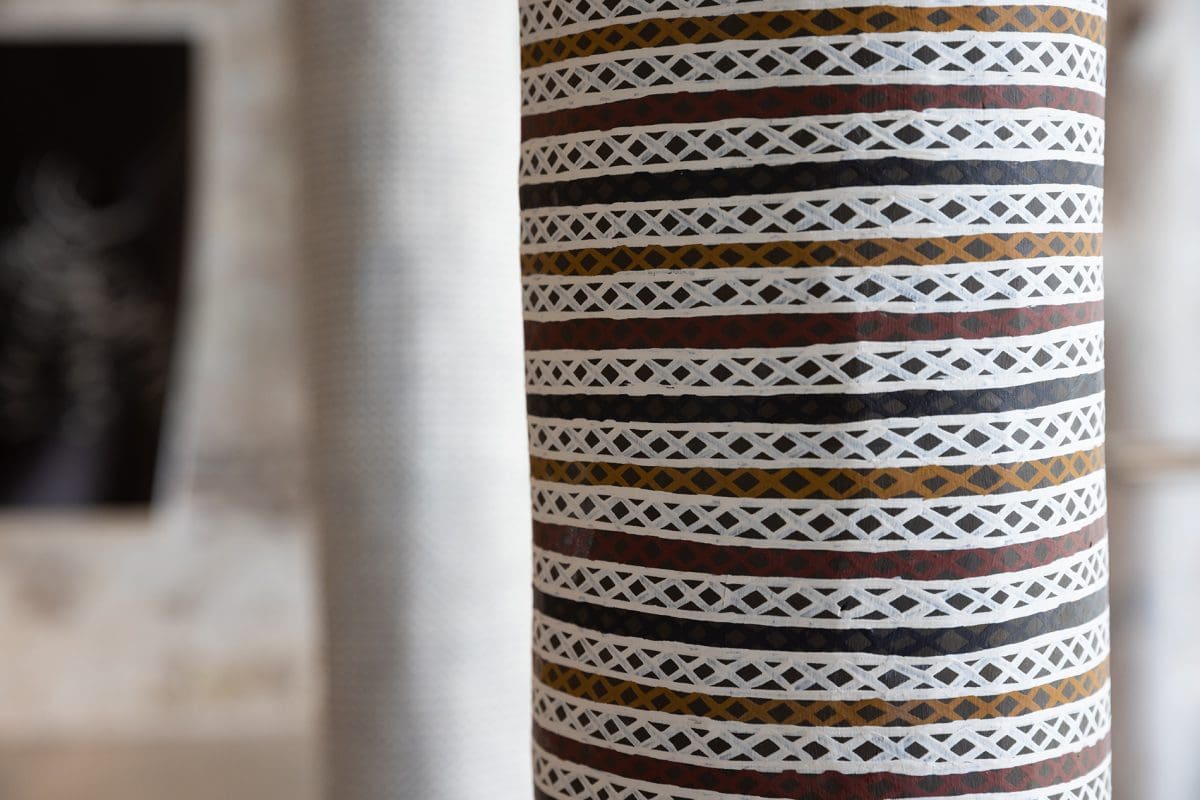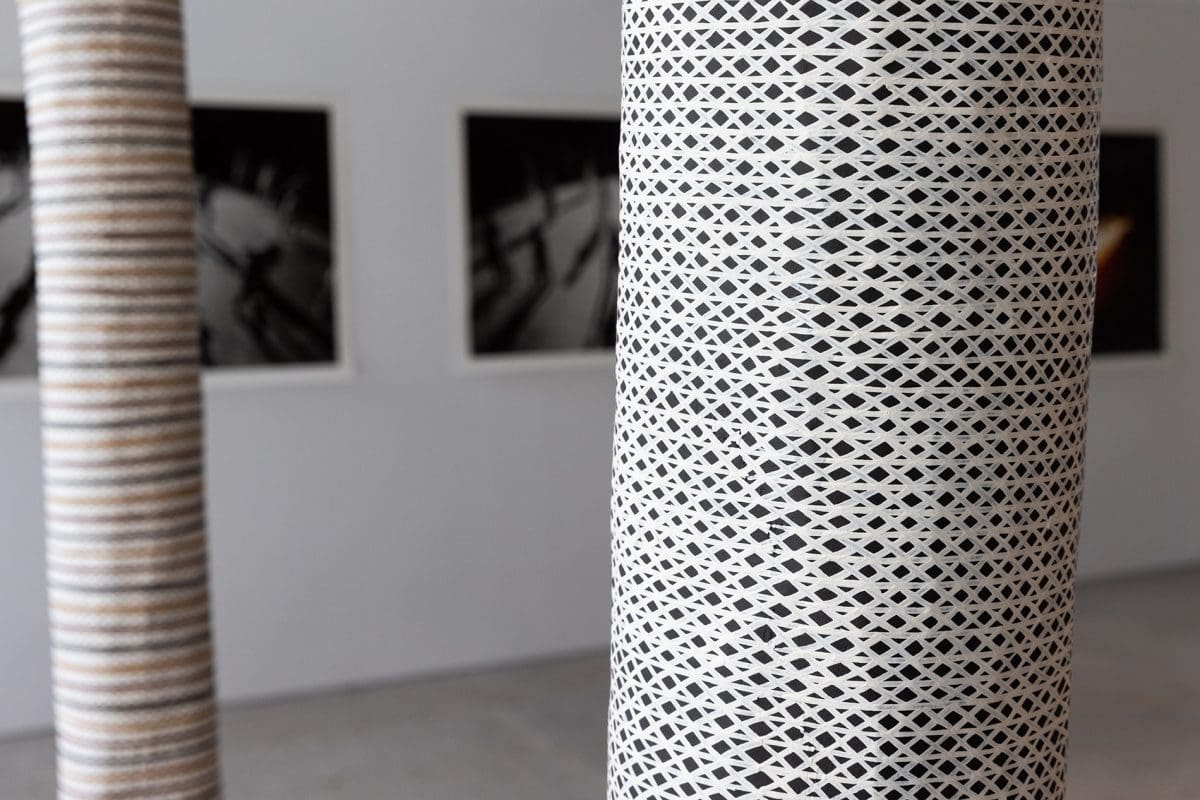
Piercing the veil
A new exhibition at Buxton Contemporary finds a rich complexity in the shadowy terrain between life and death.

Djirrirra Wunuŋmurra, detail. Photograph by Toby Meagher.

Djirrirra Wunuŋmurra, Buyku, 2021, Larrakitj, 265 x 19 cm. Photograph by Jodie Barker.

Djirrirra Wunuŋmurra, Buyku, 2021, Larrakitj, 270 x 20 cm. Photograph by Jodie Barker.

background: Djirrirra Wunuŋmurra, Buyku, 2021, Larrakitj, 265 x 19 cm. foreground: Djirrirra Wunuŋmurra, Buyku, 2021, Larrakitj, 270 x 20 cm.
Djirrirra Wunuŋmurra’s three-metre tall larrakitj (memorial poles) are perfect for the soaring interiors of Michael Reid’s new Chippendale gallery, says curator Toby Meagher. Fifteen of the impressively patterned larrakitj will form an installation as part of the show, which will also run simultaneously at the gallery’s Berlin venue, doubling the amount of work on display. Meagher says it is a first for the gallery—expanding on the trend that has emerged during the pandemic in which visitors can view a show online or in person. In this case, they can see one half of the show in person, in either Sydney or Germany, and the entire production online.
Wunuŋmurra hails from Arnhem Land in the Northern Territory and is the daughter of Yanggarriny Wunuŋmurra (1932-2003), who passed on the rights for her to use the family’s buyku imagery. But when community tensions arose about the usage, Wunuŋmurra pursued an entirely new direction as a retort. She began to explore using patterns related to the yukuwa (yam) leaf, with its distinctive three-pointed shape. Now, says Meagher, Wunuŋmurra’s work has two separate strands, yukuwa and buyku, with the former manifesting as gently spiralling floral motifs, the other more rigorously geometric. The various patterns appear on the larrakitj and in paintings on bark and board. Some of the larger board paintings incorporate the yukuwa design and use white on white, or on a soft pink ochre. “They are very delicate and waif-like paintings,” says Meagher.
The gallery first showed Wunuŋmurra’s work last year in the group show Future Ancestor, alongside artists Christian Thompson and Regina Pilawuk Wilson. “That show was looking at really diverse contemporary Indigenous practice, where the artists were working in patterning to some degree, but with completely different approaches to each other,” Meagher explains. “This is our first chance since to work with Djirrirra—people loved the work.”
Djirrirra Wunuŋmurra
Michael Reid
3—27 March
This article was originally published in the March/April 2022 print edition from Art Guide Australia.